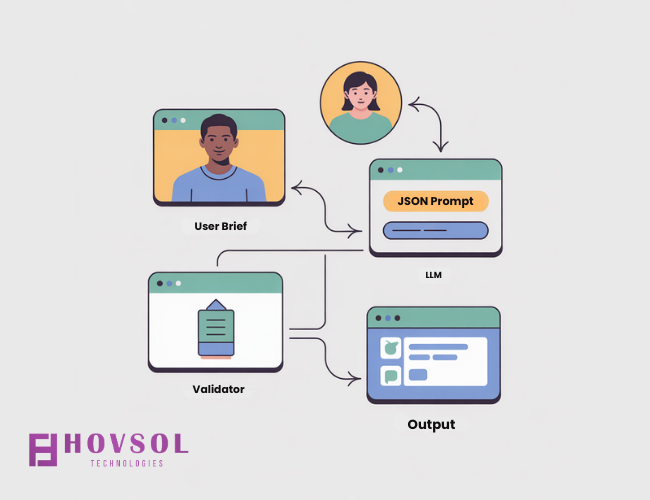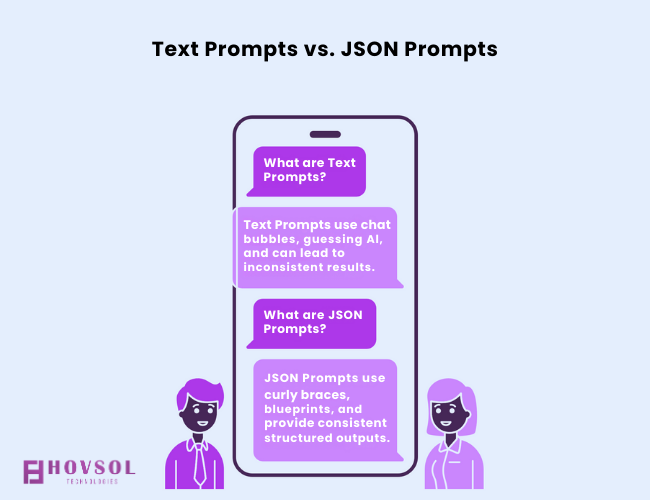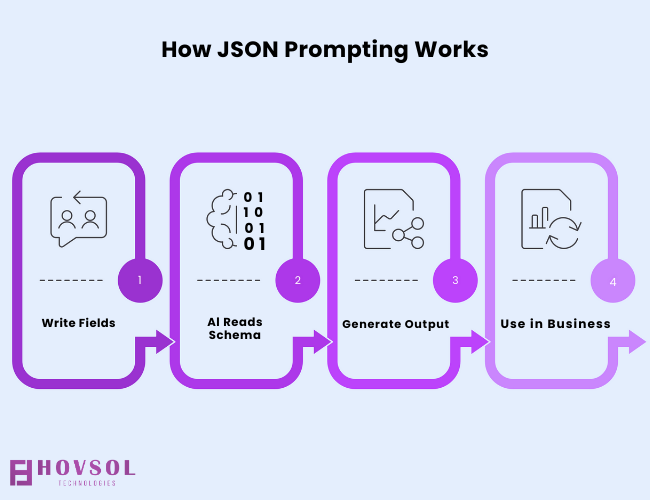Ever feel your AI isn’t quite getting it? You craft a careful prompt, yet the reply misses the mark. That gap slows work and drains trust. Good news: you can talk to models in a format they understand better.
This listicle isn’t just for 2025—it’s built to stay relevant well into 2026 and beyond, so you’ll keep getting value as tools evolve.
Enter JSON prompting. It’s a simple habit: give structured instructions, get structured results. Teams use it to cut guesswork, improve accuracy, and make outputs predictable. Below, we’ll show what it is and how to use it fast.
Key Takeaways
- Structure wins over guesswork. By framing prompts in JSON, you remove ambiguity and make outputs more reliable.
- Consistency builds trust. Standardized outputs help teams scale workflows and integrate AI into daily operations with confidence.
- Control unlocks creativity. Paradoxically, more structure frees you to focus on strategy and imagination rather than fixing messy results.
What Exactly is JSON Prompting?

JSON Prompting means structuring your instructions to AI models using the JavaScript Object Notation (JSON) format. Think of it like filling out a detailed form for the AI, rather than just talking to it. You provide precise, machine-readable input.
Instead of vague sentences, you organize requirements using key-value pairs, arrays, and nested objects. This removes ambiguity, telling the AI exactly what you want. It’s a growing trend among AI users for its clarity and effectiveness.
Canonical primer on enforcing JSON schemas with OpenAI models. Builds topical authority.
Why Marketers and Founders Love Structured Prompts
LLMs don’t “understand” language like humans do; they follow patterns and structure. JSON is ultra-structured, making it inherently better for them to process. This leads to several powerful advantages for your business.
Boost Accuracy and Reliability
JSON prompting significantly lowers “hallucinations” and inconsistent responses. By giving the AI clear guardrails, it keeps outputs focused and factual. Models were trained on code and structured data, so JSON aligns well with their inherent understanding.
When the AI has fewer guesses to make, the outcome is always better. This precision means more reliable results for your critical business tasks.
Achieve Unmatched Consistency
A fixed JSON structure ensures every AI response follows a predictable pattern. This is vital for scalable workflows, where consistent quality across teams is a must. Your outputs become easier to parse and evaluate programmatically.
This standardization not only speeds up workflows but also guarantees repeatable results. It makes collaboration and automation seamless across all your projects.
Gain Full Control Over AI Outputs
With JSON, you explicitly specify the task type, topic, audience, and desired output format. There’s no guesswork involved. You dictate the mood, style, and structure, making the AI a powerful collaborator.
You’re not just asking; you’re specifying exactly what you want. This level of control ensures your AI delivers precisely what your business needs.
JSON Prompts vs. Traditional Text Prompts: A Clear Difference

Many of us start with traditional, free-form text prompts. They feel like chatting with a friend. But this conversational approach often leaves too much room for interpretation.
A structured JSON prompt, however, acts as a blueprint. It clearly labels instructions, making them easy for the AI to follow. See the comparison below to understand the key differences.
| Aspect | Normal (Text) Prompts | JSON Prompts |
|---|---|---|
| Interaction | Feels like chatting with a friend | Feels like giving clear instructions to a computer |
| Instructions | Mixed into sentences, AI guesses intent | Clearly labeled fields, explicit |
| Consistency | Varies, hard to predict with small changes | Structured format ensures predictable responses |
| Complexity | Long or detailed tasks become confusing | Organized structure makes complex tasks easier |
| Output Control | Less precise, often requires manual parsing | Predictable, machine-friendly, easy to integrate |
Once you prefer structure, push it further with Mastering Super-Prompts for AI Tools – a practical guide to high-fidelity instructions
Practical Uses for JSON Prompting in Your Business
JSON prompting shines across many business applications, turning vague requests into actionable instructions.
Summarization Done Right
Need to summarize complex data? JSON prompting helps condense JSON objects into natural language, following your exact template. You can specify length, tone, and audience for precise summaries. This is ideal for internal reports or external communications.
Generating Creative Content and Code
From crafting social media posts to writing or debugging code, JSON prompts define requirements precisely. You can specify platform, structure, goals, and constraints for content. For code, you can dictate language, desired output, and comments.
Crafting Engaging Videos and Images
For AI video tools like Veo, JSON prompts define cinematic details. You can control camera composition, lighting, audio, and visual style. This ensures your generative media aligns perfectly with your vision.
Streamlining Data Analysis
When analyzing market updates or research, JSON prompts can extract structured insights. You can ask for a market summary, sentiment, opportunities, risks, and a confidence score. This provides clean, machine-readable results for dashboards or reports.
Smart Tips for Crafting Your Own JSON Prompts
Ready to start building your own powerful JSON prompts? Here are some simple, effective tips.
Structure and Nesting are Key
Always use proper JSON formatting with curly braces, quotes, and commas. For more complex requests, use nested objects to organize details. This clear hierarchy helps the AI understand intricate relationships within your prompt.
Be Explicit and Provide Examples
Clearly define each field and its expected value. If a specific style is important, include examples for the AI to reference or imitate. This leaves no room for guesswork.
Iterate and Refine
Start with a basic structure, then gradually add layers of detail. It’s like building an architect’s blueprint, step by step. Validate your JSON using online tools to catch any syntax errors.
Think Like an Engineer
Shift your mindset from “asking” the AI to “specifying” exactly what you want. Imagine you’re writing a detailed plan or a set of instructions. This approach leads to more surgical and upgradeable prompts.
When to Keep it Freeform
While powerful, JSON prompting isn’t for every task. If your goal is pure creativity, unpredictability, or generating ideas without rigid constraints, a free-form prompt might be better. Think of JSON as structure, and freeform as chaos; choose based on your desired outcome.
FAQs
What is JSON prompting?
JSON prompting is a technique where you structure your AI instructions using the JavaScript Object Notation (JSON) format. It provides clear, machine-readable input to large language models.
Why is JSON prompting better than regular prompts?
JSON prompts reduce ambiguity, improve consistency, and increase the accuracy of AI responses. They allow you to control the output format precisely, leading to more reliable and actionable results.
Which AI models support JSON prompting?
Major LLMs like ChatGPT, Claude, Gemini, Mistral, and GPT-4o (and newer models like GPT-5) all understand and often prefer structured JSON input.
Can I use JSON prompts for creative tasks?
Yes, you can use JSON prompts for creative tasks like writing poems or generating images, but it imposes structure. If you want pure unpredictability or boundless imagination, a free-form prompt might be more suitable.

Conclusion
JSON prompting is more than just a technical trick; it’s a fundamental shift in how we interact with AI. It forces precision, providing clear guidance for AI models while still allowing for impressive creativity. The result is sharper visuals, smarter logic, and outputs that truly reflect your intent.
Ready to transform your AI interactions and unlock better results? Start experimenting with JSON prompting today to build more reliable and effective AI-powered solutions for your business.




